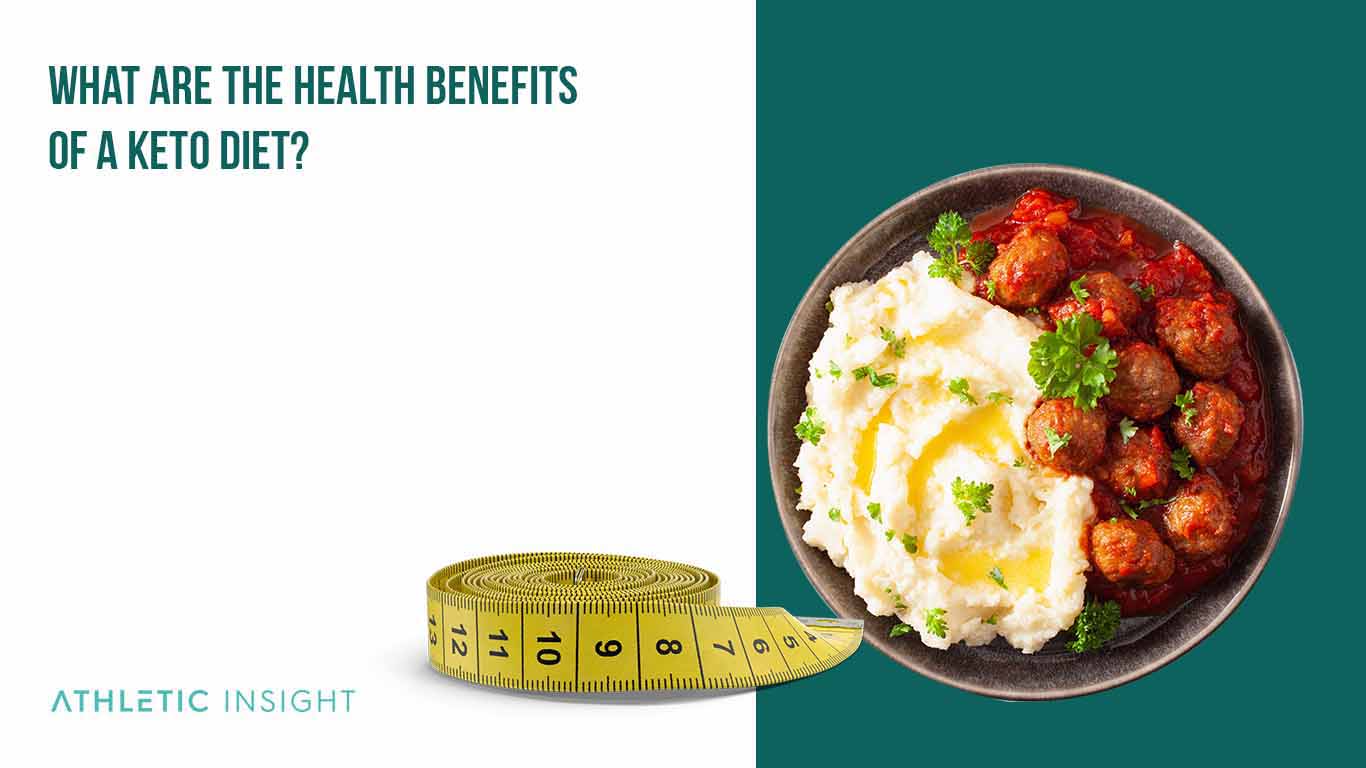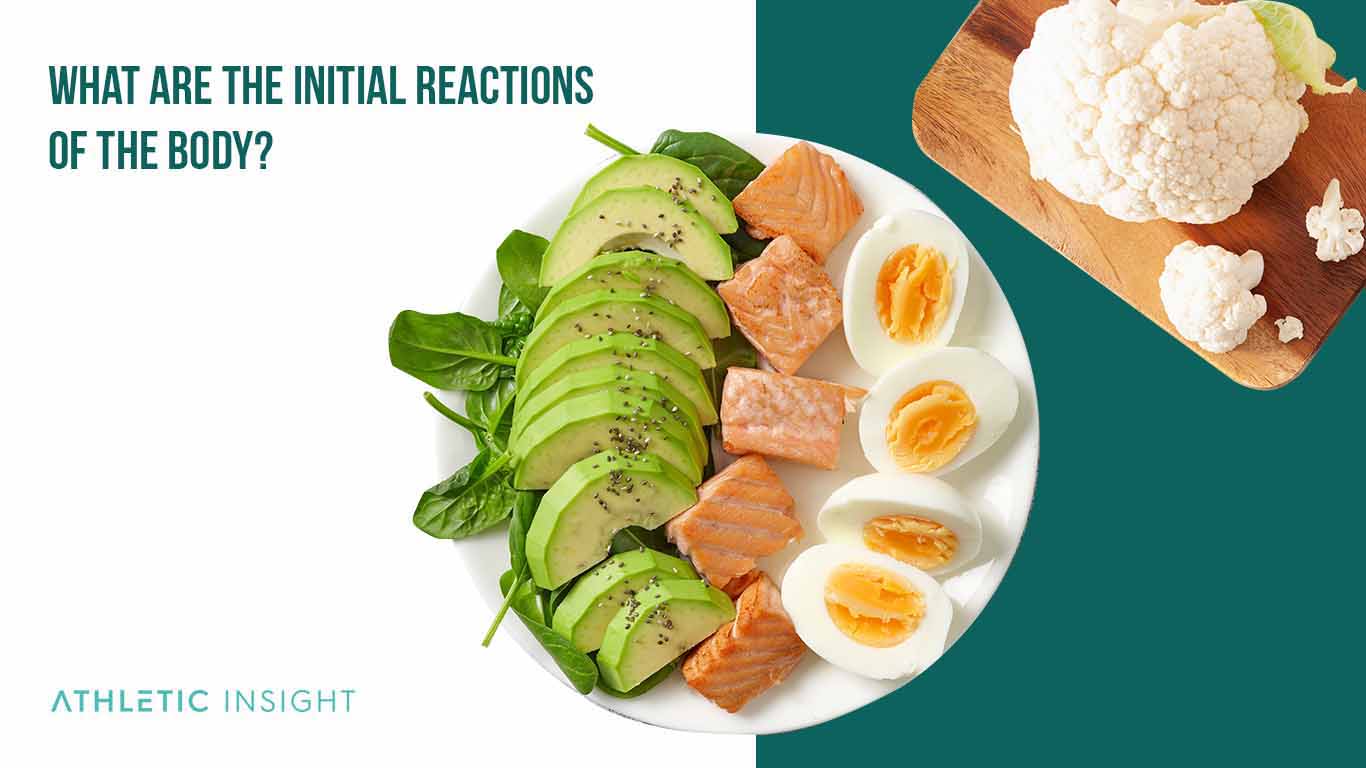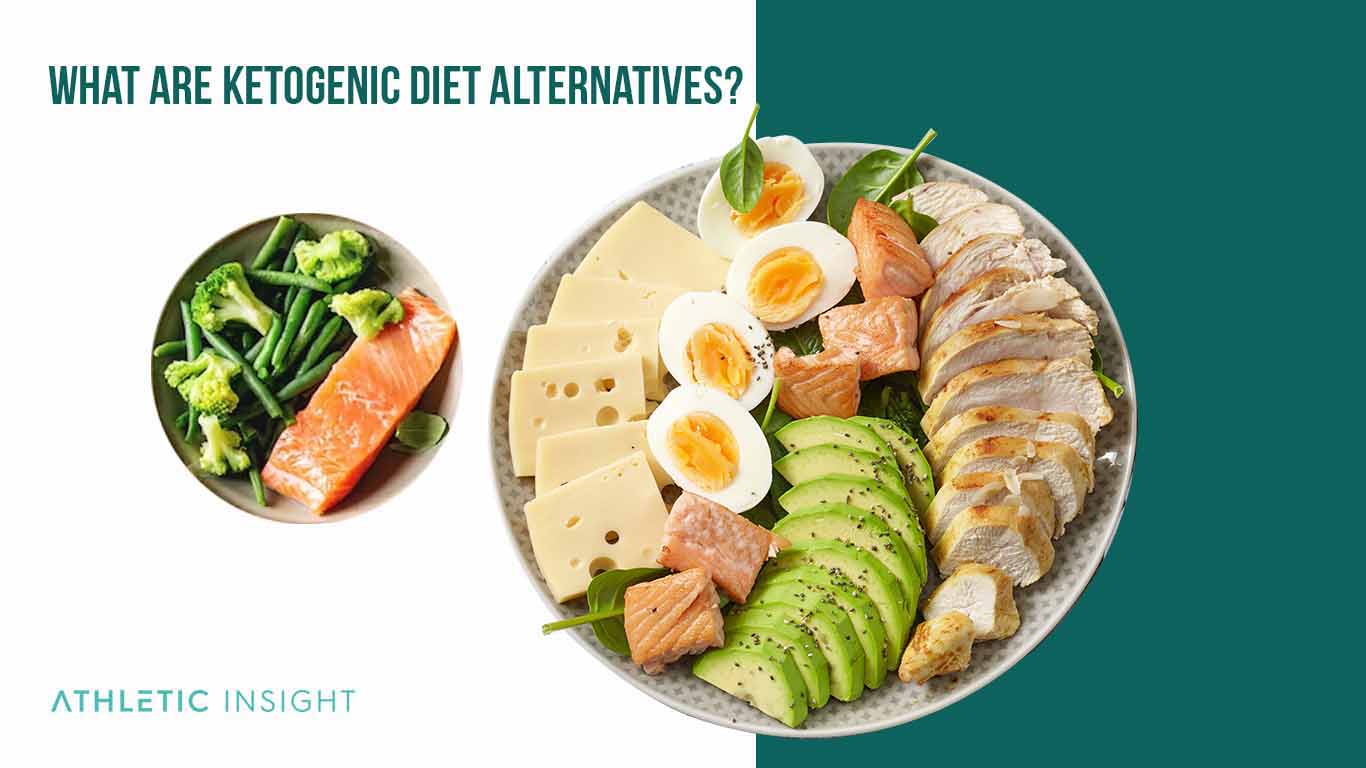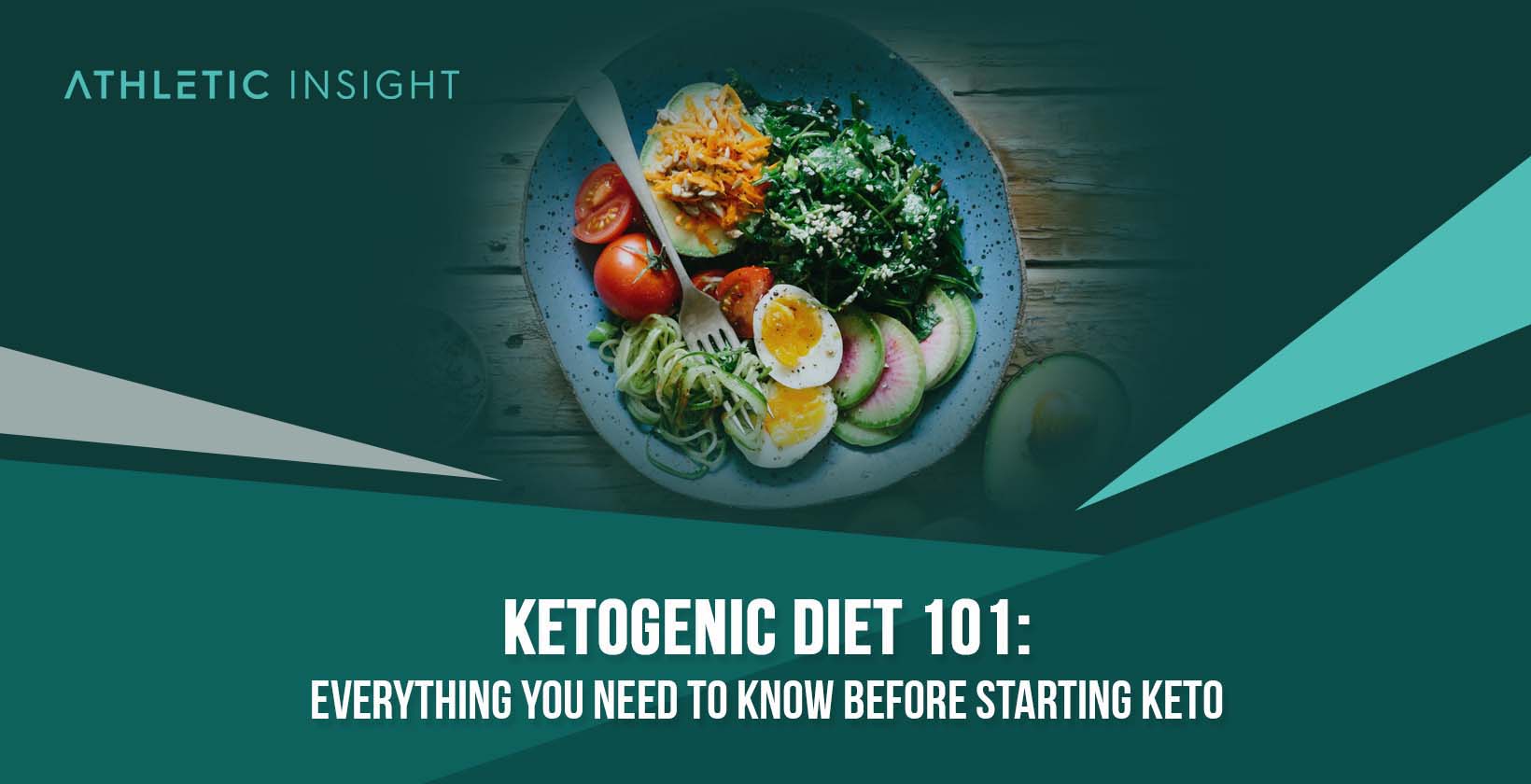The Ketogenic (Keto) diet is a high-fat and low-carbohydrate diet that induces a metabolic condition known as ketosis within the body. When drastically limiting carbohydrates, and increasing overall fat consumption, the human body uses stored fats as its primary source of energy. This results in the formation of an energy-producing molecule known as a ketone.
While it may seem counterintuitive to consume more fat to lose weight, with the ketogenic diet, it is not. By tracking your daily macronutrient (carbohydrates, proteins, and fats) consumption and limiting yourself to 70% fat, 20% protein, and 10% carbohydrates, your body will enter into a state of ketosis after several days to a week.
It has been shown through studies that the ketogenic diet aids in multiple areas such as increasing weight loss, regulating blood sugar levels, improving mental clarity, reducing inflammation, and reducing epileptic seizures. These benefits alone are the driving factors as to why the Ketogenic diet has been toted as one of the best diet plans.
Since side effects such as vitamin shortages and constipation have been reported, it is essential to check with a medical professional before starting the keto diet as it may not be appropriate for everyone.
How Does the Keto Diet Work?
The Keto diet works by changing where one gets their energy and how ones body burns energy. Ketogenic eating forces the body into the metabolic state of ketosis. Ketosis is one of the ways the body can produce energy when other food sources are unavailable.
Normally, cells transfer energy to the body through blood sugar absorption. Blood sugar is produced through the consumption of carbohydrates. When the body consumes fewer carbohydrates, it seeks other means to produce the energy that one needs.
Ketone bodies, or ketones, are produced by the liver and absorb fat to use for energy when carbohydrate levels in the body are low. By switching from blood sugar energy to the energy produced by ketones, the keto diet enables weight loss and a reduced appetite.
What are the Health Benefits of a Keto diet?
The keto diet has been widely studied for its assistance in reducing seizures in epilepsy patients. As studies continue to emerge, the keto diet has shown health benefits for weight loss, heart health, improved brain function, reduced acne, and more.

- Weight Loss with Ketogenic Diet
- Improved Heart Health with Ketogenic Diet
- Protected Brain Function with Ketogenic Diet
- Improved PCOS Symptoms with Ketogenic Diet
1. Weight Loss with Ketogenic Diet
Patients experience weight loss with the ketogenic diet through a reduced appetite and a boosted metabolism. There have been many studies on the efficacy of the keto diet for weight loss and assisting patients with obesity.
2. Improved Heart Health with Ketogenic Diet
Ketogenic diets significantly decrease LDL cholesterol and increase HDL cholesterol for improved heart health.
3. Protected Brain Function with Ketogenic Diet
Studies show that the keto diet can be neuroprotective and possibly assist patients with Alzheimer’s and Parkinson’s disease.
Other studies suggest that the ketogenic diet can enhance the effects of radiation treatments on patients with brain tumors.
4. Improved PCOS Symptoms with Ketogenic Diet
Ketogenic diets can help improve symptoms of polycystic ovary syndrome. By decreasing insulin, glucose, and testosterone in women with PCOS, a keto diet can help alleviate symptoms and potentially increase fertility.
What Are the Health Risks of a Keto Diet?
The keto diet has some associated health risks such as the challenges of achieving nutritional needs with such a highly restricted diet. The keto flu is also a common symptom of the keto diet. Many people starting out experience the keto flu within two to seven days of strictly reducing their carb intake.
The keto flu does not mean you are in a state of ketosis, but an indication that your body is adjusting how it metabolizes fats and carbs. Symptoms of the keto flu include fatigue, headache, and brain fog.
Keto diets are not recommended for anyone with liver, pancreas, gallbladder, or thyroid conditions. Talk with a nutritionist or doctor about how your body can best reap the benefits of the keto diet without sacrificing your nutrition.
How to Do the Keto Diet?
The Standard Keto diet restricts your food intake to 70% fat, 20% protein, and 10% carbohydrates. Generally, this is under 20-50 grams of carbohydrates per day. Each body is unique, and the gram amount is adjusted to each person differently.
The cyclical keto diet is the same as the standard keto diet but allows you a couple of cheat days in between.
When getting started with the keto diet, it can be a math game calculating your daily calorie and macronutrient intake. However, it is important to do the calculations and follow these guidelines to achieve ketosis.
- Start Familiarizing Food Labels
- Plan Your Meals Ahead of Time
- Customize Keto Meals to Your Liking
- Search for Keto Diet Meal Plans
- Look for a Frozen Keto Meal Plan
- Bring Your Own Food
1. Start Familiarizing Food Labels
Get acquainted with the nutritional information on your favorite foods. US food labels list fat and carbohydrates in grams and percentages. Protein is listed in grams only.
Many keto dieters calculate the net amount of carbs they eat rather than the total because dietary fiber is not digested. Dietary fiber and total sugars are listed separately on the label for easy subtraction.
Once you have spent some time eating keto, you will have a general understanding of which food items are your go-to’s and which ones to save for a cheat day.
2. Plan Your Meals Ahead of Time
Meal prep for the keto diet is crucial to success. Measure out foods and do the calculations in advance so that when hunger strikes, you can grab and go without thinking.
3. Customize Keto Meals to Your Liking
Research keto recipes of your favorite dishes to keep mealtime pleasureful. By customizing your keto diet to suit your taste, you are more likely to stick with it longer.
4. Search for Keto Diet Meal Plans
If the calculations and meal preparation are holding you back from starting a keto diet, then search for a keto meal plan in your area. Many places offer deliverable boxes with keto snacks and prepared meals right to your door. This option saves you time and forethought but is more expensive than doing it yourself.
5. Look for a Frozen Keto Meal Plan
If you are short on time, consider a frozen keto meal plan in your region. Like fresh keto boxes, frozen keto meal plans are delivered straight to your door. Simply unpack it into your freezer and conveniently stick to your keto diet.
6. Bring Your Own Food
Going out for dinner can be the bane of a keto dieter’s existence. Most restaurants do not cater to the keto diet without the kitchen making modifications or bringing each ingredient separately. Avoid the temptation to cheat by packing keto-friendly snacks and meals.
How to Start a Keto Diet?
To start a keto diet, you need to track your macronutrients daily. Replace high-carb foods like fruits, grains, sugar, and starchy vegetables with healthy protein and fat-rich sources.
Allow yourself to reduce your carb intake slowly until you are comfortable eating fully keto. You can monitor your progress into the state of ketosis by checking ketone levels in urine, blood, or breath.
Eating the right amount of keto-friendly foods each day will help you see the keto diet’s weight loss benefits. Avoid making mistakes during keto dieting by drinking lots of water, eating foods rich in Omega-3 fatty acids, and consulting with a healthcare professional.
What Are Foods That You Can Eat While on a Keto Diet?
Even though it is restrictive, there are still many foods that you can eat while on a keto diet, such as the following.
- Seafood: A ll seafood is keto-friendly. You can indulge in under the sea delicacies like mahi-mahi, flounder, crab, shrimp, lobster, scallops, and more. Salmon has 0 carbohydrates, 20 grams of protein, and 13 grams of fat per 100-gram serving.
- Low-carb Vegetables: Keto options for vegetables include asparagus, tomatoes, spinach, lettuce, celery, mushrooms, cucumber, and zucchini.
- Cheese: Cheese is high in saturated fat and low in carbohydrates. The best options for keto cheeses are goat cheese, cream cheese, parmesan, and blue cheese. Avoid high-carb options like ricotta and cottage cheese.
- Avocados: Avocados are one of the best foods to eat on a keto diet. They are satiating, delicious, and full of healthy fats. The high dietary fiber count means one avocado is keto-friendly with 4 grams net of carbs.
- Meat and Poultry: You can eat meat and poultry on a keto diet. Fish, beef, pork, lamb, chicken, and turkey have 0 grams of carbs. Bacon and sausage are keto-friendly but should be eaten in moderation to maintain good heart health. Avoid processed meats since additives can raise the carbohydrate content.
- Eggs: Eggs are an easy and keto-friendly food option. One large egg has approximately 0.6 grams of carbs.
- Plain Greek Yogurt: Plain Greek yogurt has a high protein content and low carb count. It is a filling and healthy keto-friendly snack.
- Olive Oil: Olive oil is high in monounsaturated fats, making it a healthy keto-friendly option for salad dressings and sauces.
- Nuts and Seeds: Many nuts and seeds are high in protein and dietary fiber, helping them to be keto-friendly food options. Pecans and brazil nuts have the lowest net carbohydrates. Macadamia nuts, walnuts, almonds, and hazelnuts are also good choices. Peanuts, pine nuts, and sunflower seeds are acceptable in moderation. Chia seeds, flax seeds, hemp seeds, and sesame seeds are high in Omega-3 fatty acids and have a low amount of net carbs.
- Berries: Eat berries in moderation. Their sweetness translates to blood sugar which can pull you out of ketosis. Raspberries, blackberries, and strawberries are better options than blueberries. 100-grams of raspberries and blackberries have about 5 grams of net carbs.
- Butter and Cream: Butter is high-fat and contains 0 grams of carbohydrates. One tablespoon of half-and-half cream contains approximately 0.6 grams of carbohydrates and can be consumed on a keto diet.
- Shirataki Noodles: Shirataki noodles contain 0 grams of net carbs and around 10 calories. They are the ultimate keto-friendly noodle substitute that you can find in most Asian supermarkets.
- Olives: Olives are keto-friendly snacks that are low in carbs, fat, and protein. Net carbs for one olive is 0.1 grams.
- Unsweetened Coffee and Tea: Coffee and tea are keto-friendly drinks. As long as sugar is forgone or substituted and milk is used in moderation.
- Dark Chocolate and Cocoa Powder: Dark chocolate with a content of 70% or higher is keto-friendly. Ensure your cocoa powder has no sugar additives, pure cocoa powder can be eaten on a ketogenic diet.
Eating a variety of keto-friendly foods will help you meet your nutritional needs without going over your carb count. Some of the best foods for keto diets include salmon, olives, avocados, Greek yogurt, spinach, and shirataki noodles.
What Are Foods That You Should Avoid While on a Keto Diet?
When following the keto diet, be sure to avoid or strictly limit the foods listed below.
- Grains: Avoid grains on the keto diet. Wheat, rice, oats, quinoa, barley, and corn are rich in dietary fiber but still have high net carbs. Even a small portion of grains can pull your body out of ketosis.
- Starchy Vegetables and High-Sugar Fruits: Ground crops like potatoes, yams, sweet potatoes, beets, and carrots are all classified as starchy vegetables. Starchy vegetables have a high carbohydrate content from natural sugars. Eat fruits in moderation since their sweetness is from natural sugars that elevate glucose levels enough to pull you out of ketosis. Apples, bananas, mangoes, pineapples, and grapes are all on the do not eat list.
- Sweetened Yogurt: Yogurt with added sugar, fruits, or sweetener is likely to skyrocket your daily carb intake. Double-check the ingredients label to ensure there are no added sugars before buying.
- Juices: Juices have added sugars mixed in with the fruit’s natural sugars. Even healthy green juices are likely to have a high level of natural sugars that should be avoided to remain in ketosis.
- Honey, Syrup, or Sugar in Any Form: Honey, maple syrup, agave nectar, white and brown sugar are all delicious but not keto-friendly. They contain natural sugars that get into the bloodstream when consumed.
- Chips and Crackers: Chips and crackers are made from starchy vegetables, grains, or even dried fruit. All of these options contain high amounts of carbohydrates and are not keto-friendly.
- Baked Goods: Store-bought baked goods, including gluten-free baked goods, all have carbohydrates and sugars in them.
None of these foods are unhealthy but rather contain the wrong ratio of macronutrients to keep your body in the state of ketosis. You should avoid these foods when eating a ketogenic diet to see the most benefits from your diet.
What Are the Facts About Keto Diet?
Here are some interesting facts about the keto diet that you may not have known.
- The Keto Diet Is a Low Carb Diet: Keto is a low-carb diet where only 10% of your daily food intake can come from carbohydrates.
- The Keto Diet Is a High Fat Diet: On the ketogenic diet, 70% of your daily food intake is from fats. Healthy fats should be your go-to. Avoid trans fats and opt for monounsaturated and polyunsaturated fats instead.
- The Keto Diet Changes How your Body Gets Energy: A Ketogenic diet alters your body’s metabolic processes. By restricting carbohydrates, the body begins using stored body fat as an energy source instead of blood glucose.
- The Keto Diet Helps You Lose Weight: Everyone loses weight at different rates due to lifestyle, BMI, and how rigidly they follow the ketogenic diet. When adjusting to a keto diet, you can lose up to 10 pounds of water weight within your first week. After that, the body begins burning stored fat which can result in a loss of 10 lbs in 30 days for some.
- The Keto Diet Helps You Mentally: The ketogenic diet changes your brain’s diet. While the keto flu initially gives symptoms of brain fog, once this initial stage passes, many practicing the ketogenic diet report clarity of mind and improved sleep.
- The Keto Diet May Require Supplements: Supplements such as MCT (Medium-chain triglycerides) oil are recommended with the keto diet to fill in nutritional gaps. Vegetarian keto diets and vegan keto diets are even more restrictive, so supplements should be strongly considered.
- A ketogenic diet can help patients with Type 1 and Type 2 diabetes as well as prediabetes due to the way it alters blood sugar and insulin levels in the body.
Is the Keto Diet Considered a Healthy Diet?
Yes, the ketogenic diet is considered to be part of a healthy lifestyle as long as you are mindful of your nutrient intake and opt for heart-healthy fats over trans and high saturated fats.
Is the Keto Diet Worth Trying?
Yes, the keto diet is worth trying if you are serious about losing weight. Like any diet, the keto diet requires cutting out certain foods, but it is worth trying for its weight loss potential if you are up for the challenge.
Is the Keto Diet Expensive?
Yes, the keto diet is expensive but can be affordable. A healthy keto diet incorporates unprocessed foods and fresh veggies, which can add up. Specialty products that make keto living more convenient are costly. However, you can choose lower-priced meat options, in-season vegetables, and buy products in bulk to help lower the costs associated with this diet.
Who Should Do the Keto Diet?
The keto diet can be catered to any body type and age. People who should do the keto diet include:
- Those suffering from epilepsy
- Those wanting to lose weight
- Athletes wanting to reduce their body fat
- Diabetic or prediabetic patients
What are Keto-Friendly Recipes for Beginners?
Check out some of these delicious and keto-friendly recipes to help get your meal planning started.

- Keto Sausage Breakfast Sandwich
- Garlic Parmesan Zoodles
- Keto Fish and Chips
- Cheesy Keto Pizza Cups
- Keto Chips and Chunky Guacamole
There are many resources online for easy recipes for a beginner keto diet. Some of the best options include the Keto Sausage Breakfast Sandwich, Garlic Parmesan Zoodles for lunch, and Keto Fish and Chips for dinner.
Easy-to-grab keto snack options are Cheesy Keto Pizza Cups or Keto Chips and Chunky Guacamole. Can the ketogenic diet plan be easy? Yes, with proper meal planning and easy-to-make keto recipes, the keto diet can be easy.
How Many Calories Can You Consume When Doing the Keto Diet?
The daily calorie requirement for ages 19-30 years is 2,000-2,400 calories per day to maintain a healthy lifestyle. Ages 31-59 should consume closer to 1,800-2,200 calories per day. Over 60-year-olds should consume 1,600-2,000 calories per day.
The keto diet does not require counting calories. Instead, you strictly count macronutrients. To best achieve your weight loss goals, reduce your calorie count within the recommended ranges and increase your daily calorie expenditure.
What are the Initial Reactions of the Body?
When the body adjust to using ketones for energy, it alerts us in several ways. Some of the signs to look for to know if you are in ketosis include the following.

- Dry mouth and increased thirst
- Keto breath (bad breath)
- Diarrhea or constipation
- Reduced appetite
- Weight loss
- Symptoms of the keto flu
What Is the Proposed Time Frame for the Keto Diet?
Since it takes several days to weeks for the body’s metabolism to adjust to a low-carb diet, the proposed timeframe for the keto diet is a minimum of three months.
What Is Keto Flu?
The keto flu is the name for symptoms you may experience when transitioning off of carbs. Symptoms include fatigue, brain fog, dizziness, and keto breath. The severity of these symptoms is dependent on the person. The keto flu lasts a few days to a week for most people that experience it.
What Is the Relation Between Ketosis and Ketogenic Diet?
For the keto diet to be an effective weight-loss tool, your body must remain in ketosis. If you go over your carb count on occasion, your body will begin to get energy from glucose levels in the blood. After this happens, it will need to readjust to a low-carb diet, and keto flu symptoms may come back.
What Are Ketogenic Diet Alternatives?
Some popular diet alternatives to the ketogenic diet include the Paleo Diet, the Dubrow Diet, the Atkins Diet and the Model Diet.
- Paleo Diet
- Dubrow Diet
- Atkins Diet
- Model Diet

The most similar to the ketogenic diet is the Atkins diet, which also restricts carbohydrate intake, especially during the early phases. However, on the Atkins diet, carbohydrates are eventually reintroduced.



